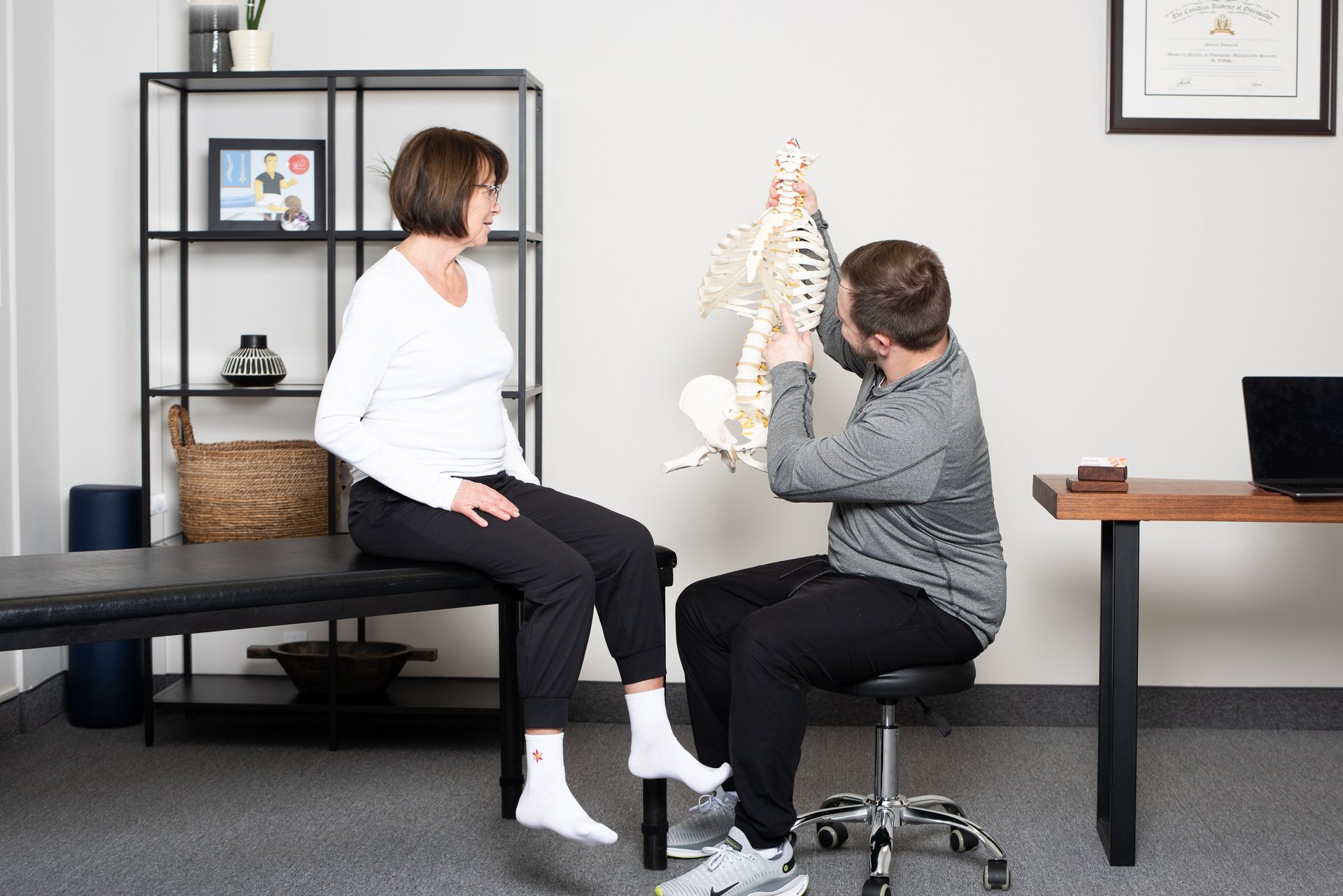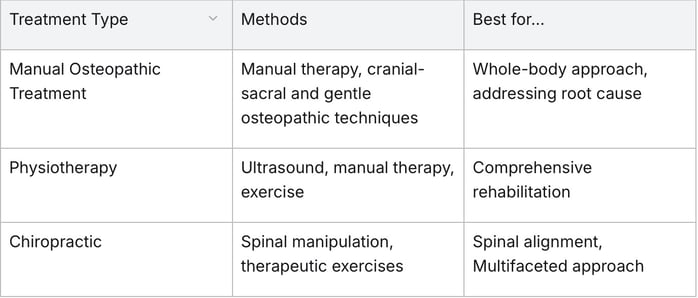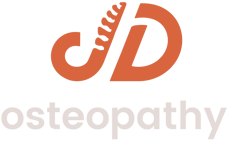
Understanding the Differences: Osteopathy vs. Physiotherapy vs. Chiropractic Care
Understanding the role of osteopathy in relationship to other popular modalities
Navigating the world of healthcare can be overwhelming, especially when choosing between osteopathy, physiotherapy, and chiropractic care. In Canada, particularly Ontario, people often wonder which is the best option for their needs. This article will help clarify these choices.
Understanding each discipline's core focus is crucial. Physiotherapy tends to improve movement and manage pain through exercises. Chiropractic care focuses on diagnosing and treating musculoskeletal disorders, often involving spinal adjustments.
Osteopathy, however, adopts a more holistic approach. By discussing when to consider each of these treatments, along with the possibility of combining them, this article aims to guide Ontarians toward making informed healthcare decisions.
What is physiotherapy?
Physiotherapy is a hands-on treatment focusing on alleviating pain and rehabilitating injuries. It targets joints, muscles, nerves, and fascia to restore proper alignment and enhance physical activity. In Ontario, physiotherapy is a popular choice among individuals seeking an effective treatment plan for resolving neck pain, joint pain, and other chronic conditions. Unlike osteopathy, physiotherapy incorporates tools, exercises, and additional resources for comprehensive treatment.
Treatment methods in physiotherapy often involve modalities such as ultrasound, heat, and electrical stimulation. These techniques aim to enhance blood flow and relax soft tissues, promoting a quicker recovery. Physiotherapists are trained health professionals who specialize in managing sports injuries and supporting the healing process. Their expertise also extends to techniques that enhance pelvic health through targeted care, contributing to one's overall quality of life.
When to consider physiotherapy?
Physiotherapy is an effective option for those experiencing pain and injury, utilizing hands-on techniques and advanced modalities to offer relief. Adults frequently seek physiotherapy to focus on posture adjustments and movement, aiming to prevent future injuries. This preventive emphasis in physiotherapy supports daily activity without hindrance from chronic pain or discomfort.
For athletes, physiotherapy plays a crucial role in injury prevention and athletic health management. The therapy's focus on proper alignment and corrective exercises helps athletes avoid potential injuries, ensuring optimal health. Physiotherapists also employ specialized techniques to enhance pelvic health, offering significant relief and improved well-being, which can be crucial for individuals dealing with related health issues.
Additionally, physiotherapy sessions can contribute to overall well-being by managing stress and promoting a robust immune system. Through manipulative therapy and muscle energy techniques, physiotherapy supports the body's natural healing processes, ensuring a holistic approach to maintaining health. Seeking physiotherapy care can positively impact the recovery journey and enhance one's range of motion, leading to improved quality of life.
What is chiropractic?
Chiropractic care in Ontario offers a natural, hands-on approach to addressing issues related to the musculoskeletal and nervous systems. It is evidence-informed and focuses on alleviating pain while enhancing quality of life. Chiropractors conduct comprehensive physical exams, providing diagnoses and utilizing manual therapies, such as spinal manipulative therapy, to restore joint movement and improve function.
Common chiropractic treatments include manual manipulation, therapeutic exercises, and soft tissue therapy. Electronic modalities, like therapeutic ultrasound and cold laser therapy, are also employed. By applying controlled force to spinal vertebrae or other joints, chiropractors aim to correct joint motion, improving natural movement and joint function. Often, chiropractors collaborate with other healthcare professionals, especially in complex conditions that benefit from a multidisciplinary approach, ensuring that chiropractic interventions complement medical treatments.
When to consider chiropractic treatment?
Chiropractic care is a popular treatment option in Ontario, particularly effective for chronic back pain. It's also ideal for individuals experiencing tension or cervicogenic headaches. Through consistent treatment, chiropractic adjustments can significantly alleviate these headache conditions by targeting underlying musculoskeletal problems.
Athletes and those recovering from sports injuries can benefit from chiropractic interventions. Such care can accelerate recovery times and boost athletic performance by promoting proper joint function and mobility. Chiropractic care, which includes spinal manipulative therapy and therapeutic exercises, is often the preferred method for addressing musculoskeletal and nervous system issues, including low back pain.
For individuals managing conditions like arthritis, diabetes, or osteoporosis, chiropractic care can be integrated into an interprofessional treatment plan. Chiropractors collaborate with other health professionals to address musculoskeletal pain and support comprehensive care, contributing to overall health and wellness for those with chronic conditions.
What is Osteopathy?
Osteopathy is a form of manual therapy focused on holistic treatment, emphasizing the interconnectedness of the body's systems. Practitioners employ various techniques to treat soft tissues, allowing the body to more efficiently resume the healing process when in balance. This approach aims to restore function by enhancing the nervous, circulatory, and lymphatic systems, ultimately improving range of motion and reducing discomfort.
Osteopathic treatments often involve manual manipulations that may elevate organ efficiency and structural integrity by improving the communication between the nerves to and from those areas. Techniques such as stretching, gentle pressure, and resistance are utilized. By addressing the body's structural alignment, osteopathy assists in alleviating chronic pain and supports optimal health.
When to consider osteopathy?
Osteopathy is particularly beneficial for those experiencing issues with muscles, joints and any abnormal tension or stiffness in the body. Common conditions such as lower back pain and neck pain are often treated effectively with this approach. Individuals with shoulder and elbow pain, knee pain, and rib pain might also find relief through osteopathy as it takes into consideration the limbs and other areas connecting to the spine.
The treatment can also address concerns related to the pelvis, hips, and legs, making it suitable for sports injuries. For those suffering from muscle and joint pain due to activities like driving, work, or pregnancy, osteopathy can be a significant aid. It is crucial for pregnant individuals to consult a GP or midwife, ensuring the osteopathic practitioner is experienced with pregnancy-related pain. Luckily for you, JD Osteopathy got you covered and can provide treatment in all stages of life.
With many locations in Mississauga and Burlington, osteopathy is considered a viable option for musculoskeletal issues such as sciatica and neck pain. People seeking a holistic approach, including lifestyle changes and exercise recommendations, might consider osteopathy as an effective treatment. The focus on body alignment and structural balance can enhance flexibility, posture, and quality of life, making it a valuable choice for those aiming to improve function and mobility.
Can you combine multiple types of treatment together?
In Ontario, combining osteopathy, physiotherapy, and chiropractic care can offer a comprehensive approach to managing musculoskeletal issues. Each practice provides unique but complementary treatment modalities. Chiropractors often utilize spinal manipulative therapy and work synergistically with other health care professionals for a multi-disciplinary approach.
Physiotherapy includes both manual therapy and modalities such as ultrasound and electrical stimulation, which are effective in enhancing treatment plans. Osteopathy focuses exclusively on hands-on techniques aimed at improving connective tissue health and blood flow, providing a holistic approach to pain management.
Combining treatments can have its benefits…but be careful to not schedule back to back treatments on the same day. This may be overwhelming with too much change or manual manipulations, which can leave you feeling sore and without enough time to rest. Osteopathy's hands-on techniques can complement physiotherapy's use of tools and exercises. Similarly, chiropractic spinal manipulation can support muscle energy techniques employed in osteopathic treatments and physiotherapy treatments. This integrated approach can improve range of motion and quality of life for those dealing with chronic pain, joint pain, and other conditions.



